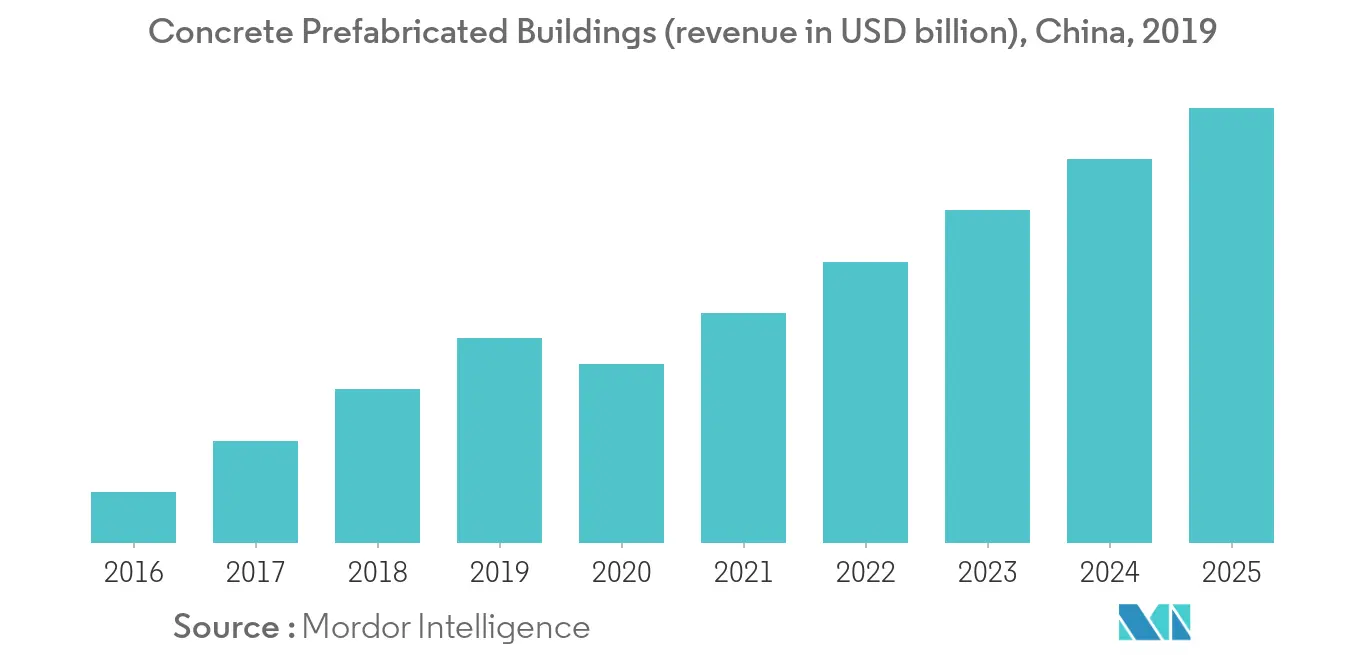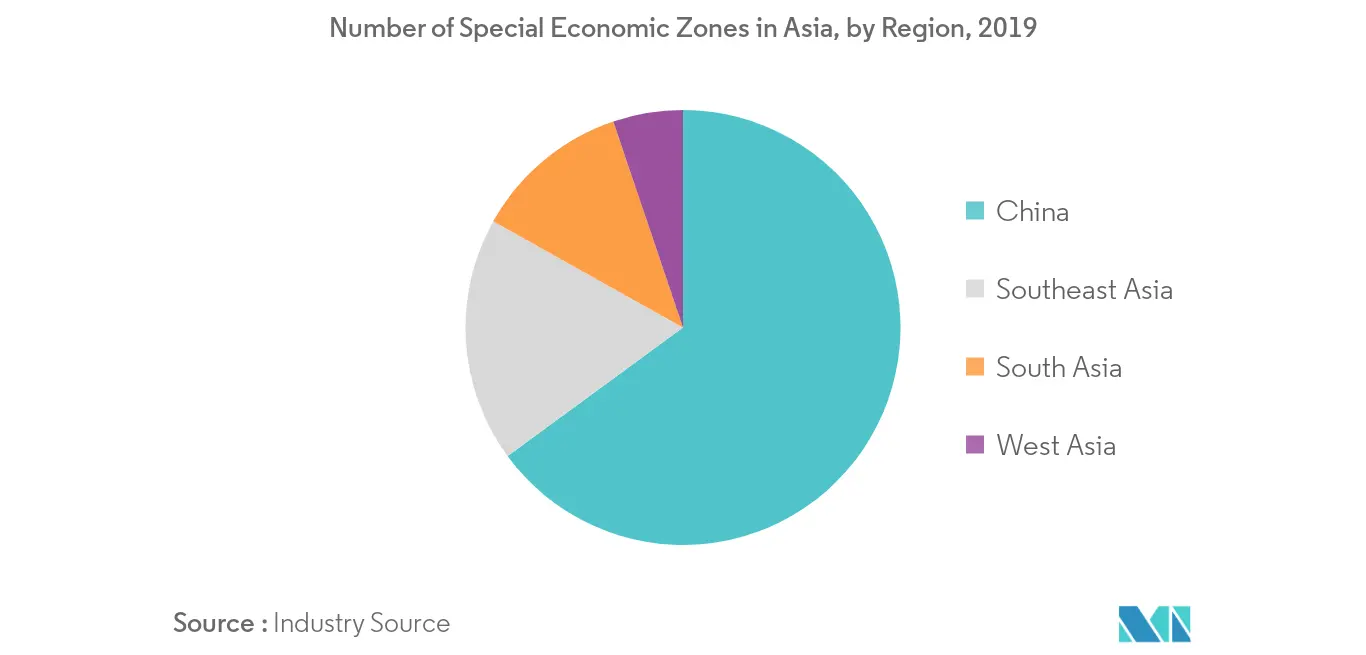Market Trends of China Prefabricated Buildings Industry
This section covers the major market trends shaping the China Prefabricated Buildings Market according to our research experts:
Concrete Holds the Major Share in the Prefab Construction Sector
China's urban landscape continues to evolve today, but unlike the earlier periods of urban development, with the influence of smarter global construction processes and methods. The growth of the building and construction industry as well as improvements in financial conditions in the region has led to an increase in demand for precast concrete elements.
With the precast construction market expected to attain USD 200 billion or an increase of 30% by 2025, China now has over 1,000 precast factories (with a design scale of 30,000m3) across the region, with 600 more in the pipeline. The explosive growth in cement production correlates with China's economic expansion.
While industrialization and urbanization advanced in the country, the demand of cement rose sharply. According to the National Bureau of Statistics of China, the net output of the construction industry grew constantly in the previous decade. Houses, roads, and bridges had been built here with phenomenal speed over the past three decades.

Banking Reforms and Development of Economic Zones to Boost the Construction Activity in Prefab & Modular Sector
In China, the introduction of low lending rates and lax central housing policies, which can make loans easily available, is likely to boost the regional prefabricated buildings market growth. The labor cost associated with prefabricated buildings is considerably low in developing countries, such as India and China. Also, of the 5,400 special economic zones (SEZs) in the world, more than 4,000 are in developing countries in Asia. China hosts the most, at more than 2,500. Southeast Asian countries together host more than 700. South Asia hosts upward of 450 zones and West Asia's tally surpasses 200. China's continued policy experiment in large-area zones, investment facilitation measures, and relaxation of foreign ownership in sectors, such as finance and health care, in pilot free trade zones are expected to draw future investments. In recent years, the central government has successfully introduced relevant policies to promote green buildings and fabricated buildings, formulated industry guidelines, and set construction targets. In its 13th Five-Year Plan, covering economic and social development from 2016 to 2020, the need to promote prefabrication as part of the construction industrialization and green building action plan was announced by the Chinese government which proposed that 30 percent of newly-built buildings will be prefabricated by 2025.

